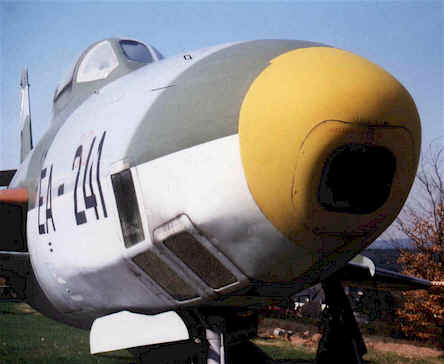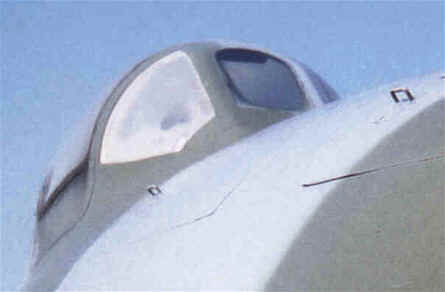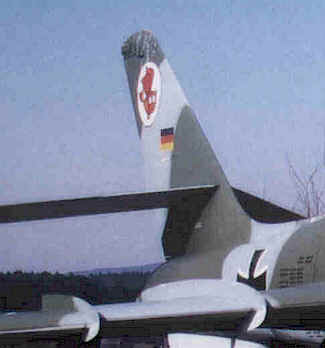by Frank Spahr
Part III
In the first and second parts of this series devoted to Hermeskeil aircraft museum in Germany, we looked at two massive fighters: English Electric Lightning F.2A and a North American F-100F Super Sabre. A closer look at the Republic RF-84F will conclude the series.
The Origin of RF-84F
The F-84 Thunderjet was America´s first major postwar fighter with its maiden flight in 1946, still with straight wings. Over 4,400 F-84s were produced until 1953, many of them being exported. It was extensively used in Korea in the low-level interdiction role. Armament was six 12.7mm guns plus eight 5-inch rockets or up to 2,000 lbs. ordnance. Later versions were able to carry a tactical atomic weapon.
The F-84F Thunderstreak with swept wings and a stronger engine (7,200 lbs. thrust as compared to 4,900 lbs. of the F-84) was developed in 1950 and began to replace the F-84 during 1954. It featured much improved performance in top speed, service ceiling and payload. 2,711 Thunderstreaks were built. In the late fifties these were replaced by the F-100.
The museum owns a reconnaissance version of the F-84, the RF-84F Thunderflash.
The developing need for a high speed state of the art photo reconnaissance platform and the evolving conflict in Korea led the US Air Force to begin studying various options for the dedicated reconnaissance aircraft in the late fourties. Republic was quick to present a proposal calling for a reconnaissance version of the F-84F. The first prototype, the YRF-84F made its maiden flight during the first week of February 1952, thus being the first modern jet specifically designed for photo-reconnaissance
Using the plane in the new role necessitated a major redesign: On the one hand, the plane´s nose had to be enlarged to allow mounting a varying array of cameras and electronic equipment, on the other the air intakes had to be repositioned from the nose to the wing roots. The pilot doubled as cameraman, so he was equipped with a viewfinder and camera control gear.
The primary use of the aircraft was tactical reconnaissance, including target assessment and coverage of bomber missions. One of the most notable accomplishments of the RF-84F was its use in the Fighter Conveyer (FICON) project, in which it was adapted for carriage by a B-36 Bomber. The FICON project was intended to stretch the range of the Thunderflash. Modifications comprised a retractable hook in the nose to contact the B-36 trapeze extended from the bomb bay. Only 25 RF-84F’s received this modification.
A total of 715 specimen were built.
The only RF-84F kit that I’ve heard about is an old 1/72 Italeri offering… but perhaps someone would like to build a conversion in other scales?
Republic RF-84F Thunderflash in Detail
The aircraft on display was used by the Bundesluftwaffe.
The plane´s very dull finish is noteworthy. Photo: Frank Spahr
 The profile of the new longer nose can be seen here. The lower surfaces of the nose were flat-sided to allow for the installation of camera windows.
The profile of the new longer nose can be seen here. The lower surfaces of the nose were flat-sided to allow for the installation of camera windows.
Photo: Frank Spahr
Mounts for half of the aircraft’s camera equipment can be seen here.
Shown is the lower starboard side of the nose. Photo: Frank Spahr
Details of the cockpit hood and fairing.
Also visible is the starboard jet engine intake. Photo: Frank Spahr
Another shot of the canopy reveals a shape of the windscreen.
Note that the removable panels in front of the cockpit are equipped with handles. Photo: Frank Spahr
The mid-fuselage section below the rear cockpit fairing features a multitude of hatches and appropriate stancils.
Just visible to the extreme left is the preforated air brake.
The red line indicates the structural division of the fuselage behind the wing. Photo: Frank Spahr
Photo: Frank Spahr
The aircraft’s tail configuration.
Visible in the front are the two wing fences.
Photo: Frank Spahr
This article was originally published in IPMS Stockholm Magazine in August 1999.






